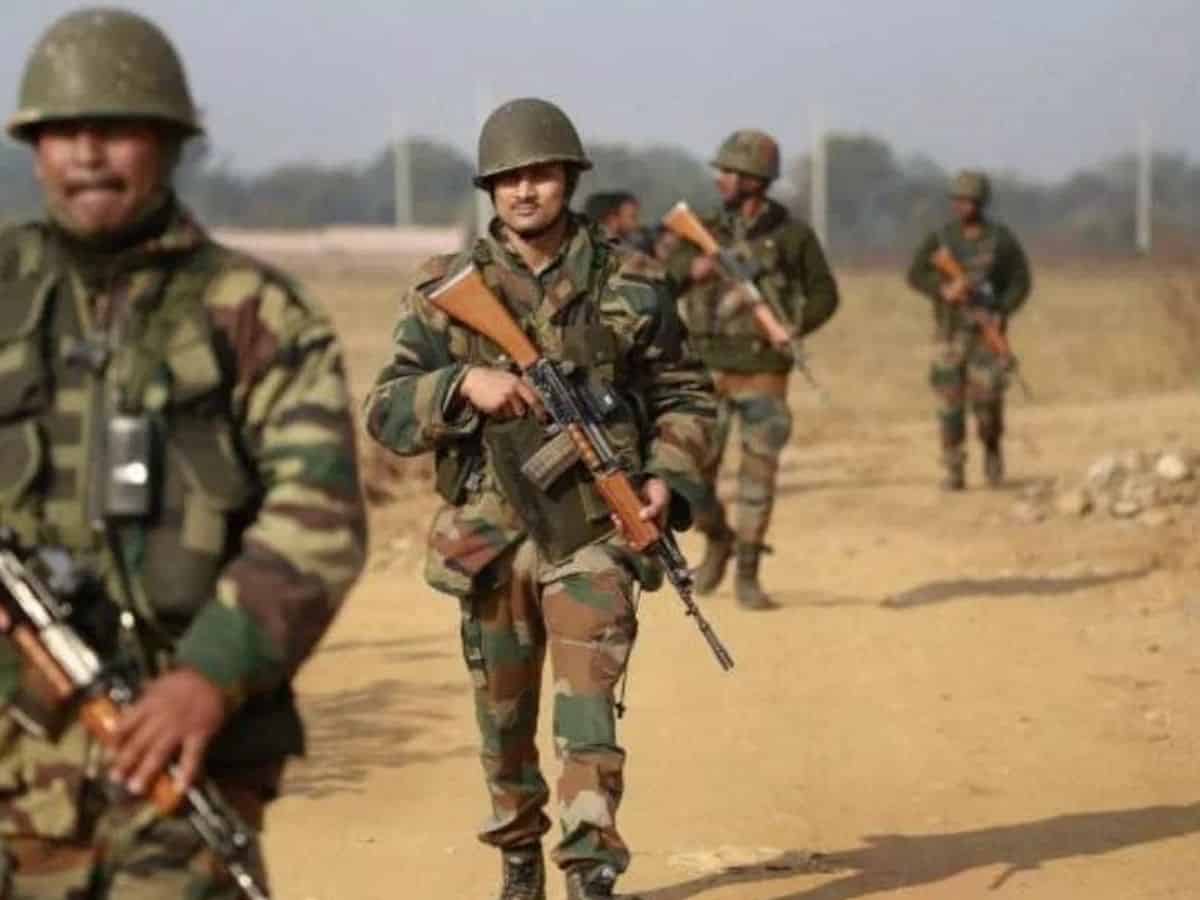
It’s time to come out of the “All is well” syndrome in Jammu and Kashmir as terrorism is showing lethality of a different kind in 2024 than the territory witnessed ever before. As the terrorists continue to target and kill soldiers in encounters or ambushes, this should lead to a realistic assessment of the situation and be addressed accordingly without deviating from the real issue.
On Monday –July 15- terrorists were engaged in a gun battle in the Dessa area of Doda district in northwest of Jammu and south of Kashmir Valley. By Tuesday morning the news came that an officer and three soldiers were killed, and the operations were continuing. This added to a series of terror attacks in which soldiers were killed, and the terrorists fed into dense forests dotting the mountainous landscape. A week earlier, on July 8, terrorists had ambushed two army vehicles killing five soldiers. It all started with the June 9 terror attack on a bus carrying pilgrims from Rajasthan and Uttar Pradesh in the Reasi district.
This is an alarming situation. While the army and police are busy in a manhunt for the terror attacks with all their men and machines in dense forests, detaining dozens of suspects, and looking for clues, terrorists inflict more casualties on soldiers. Since Jammu and Kashmir is a conflict zone, which has witnessed high velocity terrorism in various forms since late 1989, such attacks are possible because terrorism takes its own time to grow and die. Neither its birth nor death can be predicted in exact terms because there are so many factors at play.
Terrorism doesn’t erupt in a select corner. It takes many factors to come together to give birth to terrorism. In Jammu and Kashmir, there is a simplistic explanation to the birth and growth of terrorism – Pakistan is playing its age-old game of bleeding India by thousand cuts. There is no denying the fact that Pakistan much before the Pakistani leadership even before their nation took shape in August 1947 eyed Jammu and Kashmir. They sponsored the tribesmen invasion of J&K in October 1947 and that explains why one-third of the erstwhile princely state of J&K is under the illegal occupation of Pakistan in the aftermath of the United Nations brokered ceasefire in 1948. Pakistan’s all-out wars in 1965, 1971 and in Kargil in 1999 are well known, so is their motive, to grab Kashmir. All these attempts failed, and Pakistan launched a proxy war to achieve what it could not through wars.
That is a fact. No one can deny it. But there is another reality – Pakistan could not have succeeded in what it did to J&K without the local support. The internal support stemmed out of the political and economic frustration of the people. They felt cheated in elections and gave vent to their fury by becoming partners in Pakistan’s plans, some were misguided and indoctrinated, others were them because of their own interests. This cast a web of terrorism that worked in favour of Pakistan and its designs for a number of years.
At present, there is a different phase of terrorism. The terrorists, most of them are believed to be from Pakistan and operating with local support, have chosen the Jammu region as their target. Jammu for a large part of the time after 2012 has been quiet. It is a Hindu-dominated region, an established hub of Indian nationalism, and more than willing to sacrifice for the nation’s integrity. The assault is on its commitment to the nation, and terrorists are also trying to show that the narrative of “all is well” in J&K after the abrogation of Article 370 is open to question. They are trying to negate the gains that security forces have made in Kashmir, which is now a tourist hotspot, and terrorism stands pushed to the margins.
The recurring attacks in the region have shown that there are certain vulnerabilities – Jammu is not safe, and unless this region is safe the very discourse that things have changed for the better in J&K is getting challenged. In terms of tactics, terrorists are seeking to draw more attention and deployment of the troops in the Jammu region’s hilly areas, which amounts to thinning of troops in the Valley. And, they know that India has deployed between 60,000-80,000 troops on China border since May 2020. The troops cannot be pulled from the China border in Ladakh, and with the limited availability of forces, it is becoming a challenge that J&K has not seen before.
Instead of repeating that everything is hunky dory, the challenge is to refocus on the threat of terrorism in Jammu because all is well narrative will not sustain unless there is complete peace. Right now that is being perforated by regular terror assaults.

